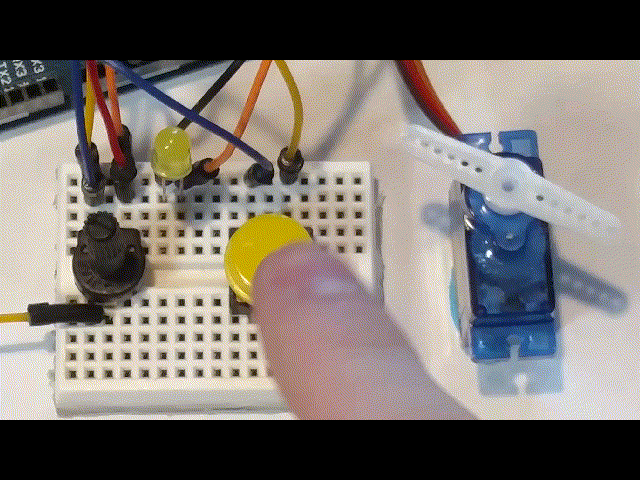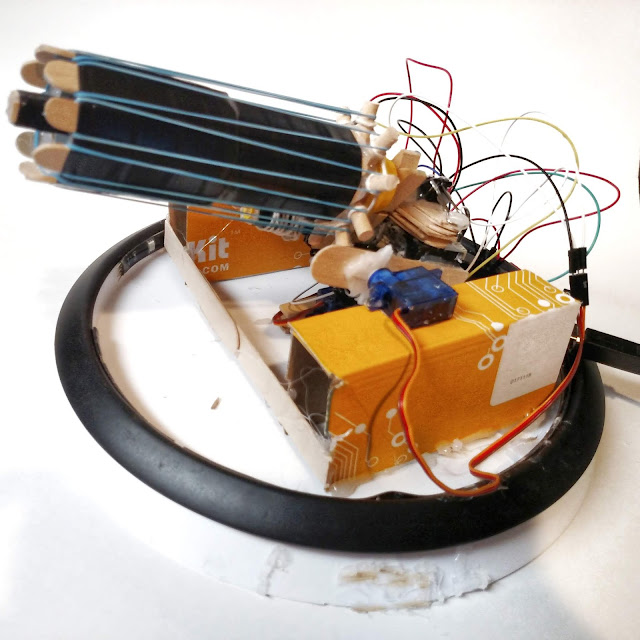Simple Record and Playback

This project allows you to "record" sensory input and store it for later use. The information is stored in EEPROM instead of dynamic memory so that it can be remembered even when the board is shut down (like a tiny hard drive). Materials: Arduino - https://amzn.to/2DLjxR2 Breadboard - https://amzn.to/2RYqiSK Jumper wires - https://amzn.to/2Q7kiKc Button - https://amzn.to/2QUGfN0 LED - https://amzn.to/2S5PFlM Resistor (for LED) - https://amzn.to/2S2sV5R 10k Potentiometer - https://amzn.to/2EBuEwq Servo Motor - https://amzn.to/2S6E5GZ Step 1: Make the Circuit Make the circuit according to the diagram above: Potentiometer to pin A0 Button to pin D2 Servo to pin D3 Led to pin D13 Step 2: Upload Code # include # include //used to store recorded values Servo myServo; float resolution = 1000 ; //MUST be less than EEPROM.length() (check serial monitor) float recordTime = 5 ; //delay time bool recording = false; void set...

